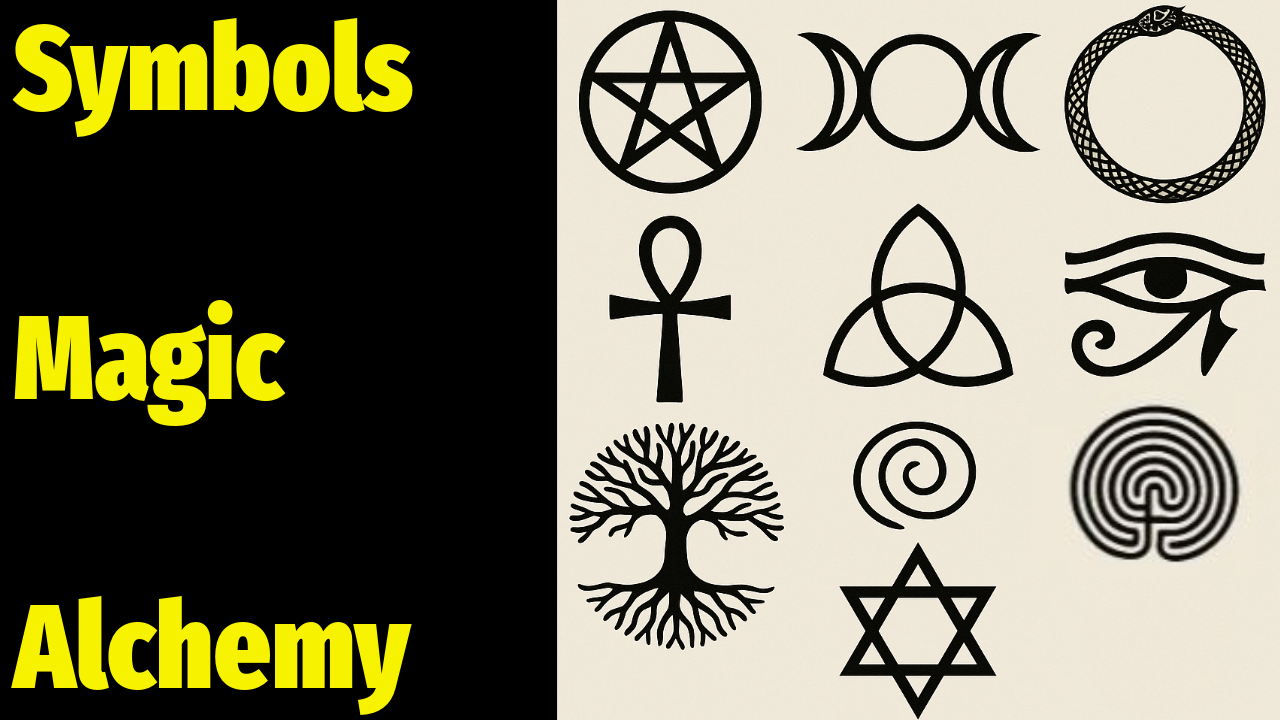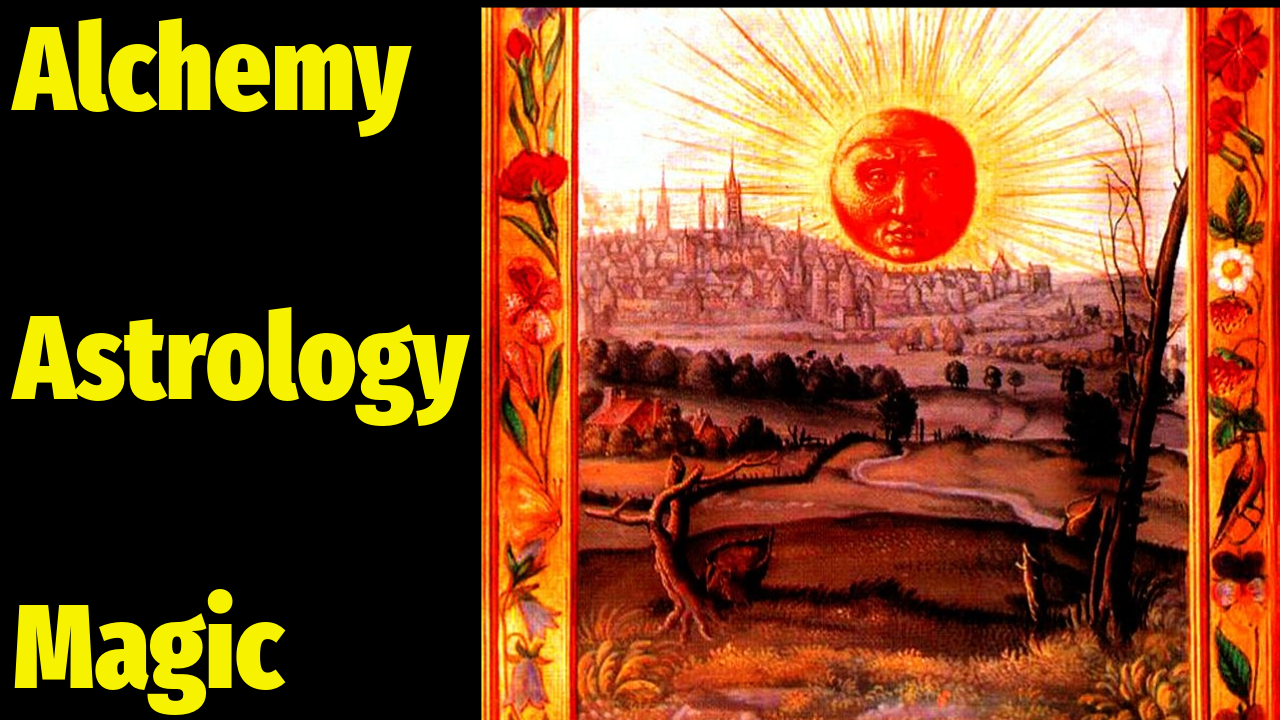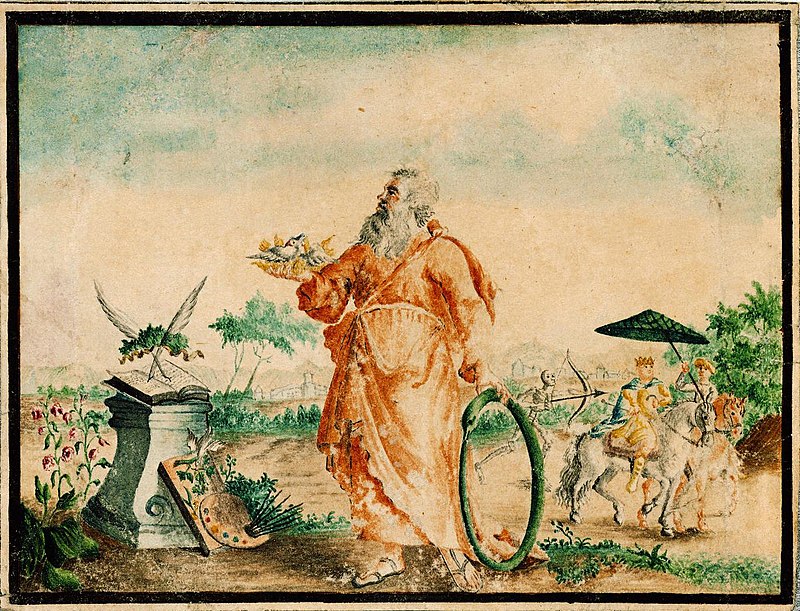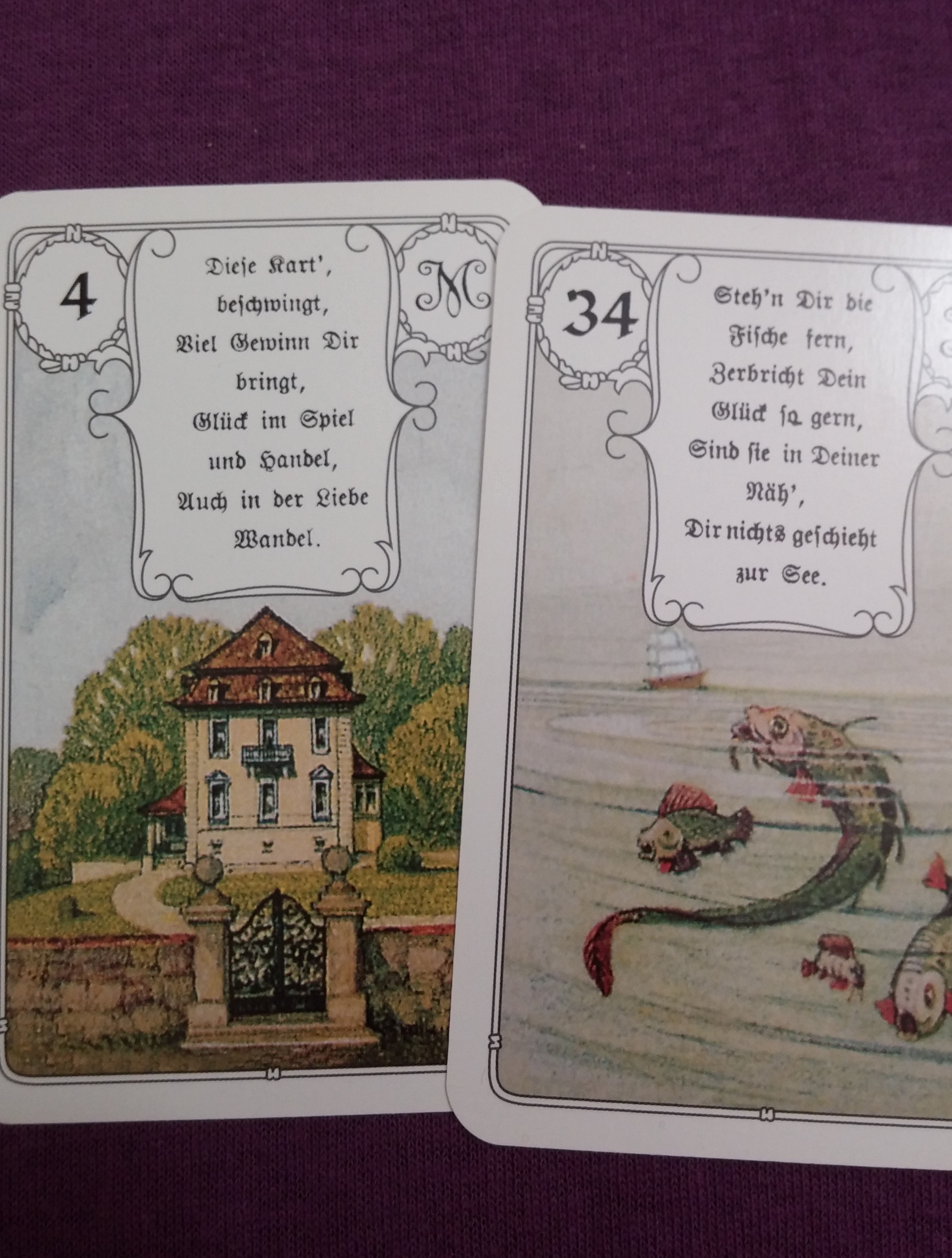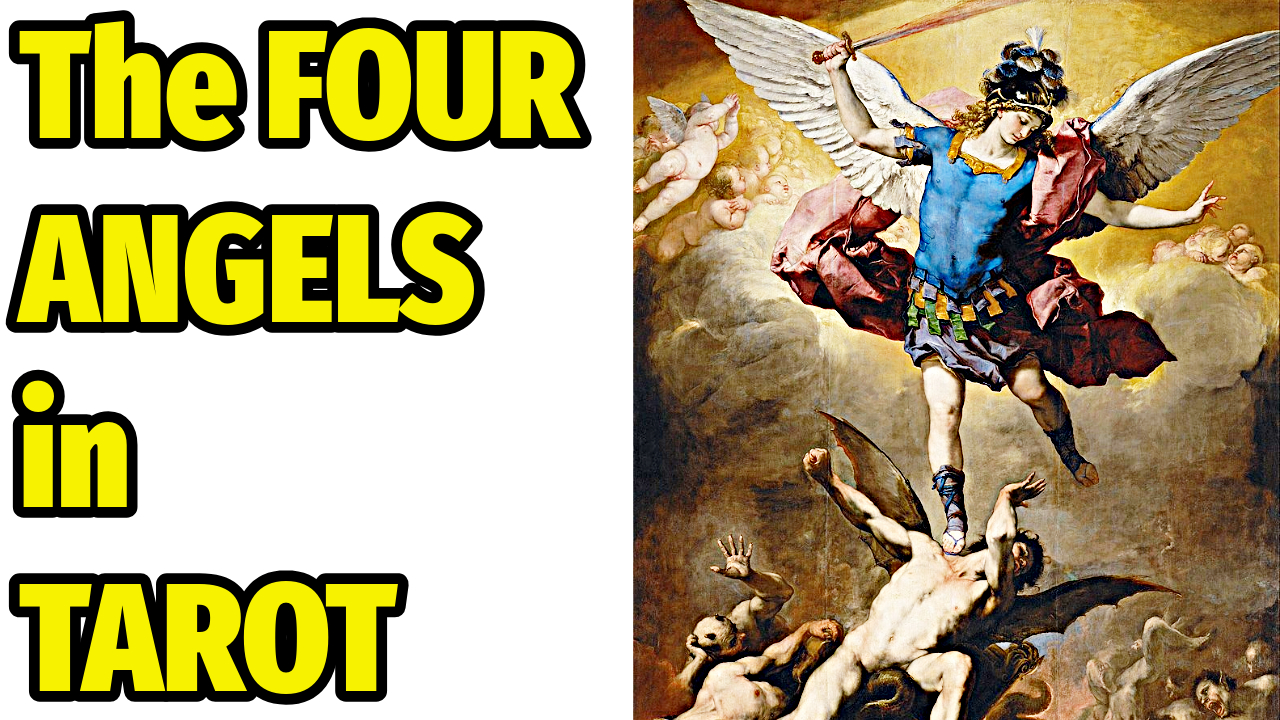
Throughout history, angels have appeared as messengers, guardians, and bearers of divine truth—silent watchers who guide humanity through darkness and light. In tarot there are 4 Archangels that stand at the crossroads of human experience, offering guidance through transformation, temptation, and awakening. These powerful celestial beings appear in key cards of the Major Arcana—leading us through love, balance, shadow, and rebirth.
These aren’t just random figures placed for decoration. Each one represents a powerful force of divine energy. They are mirrors of your soul’s evolution, cosmic allies on your path toward healing, self-realization, and liberation.
In this post, we’ll explore the deeper meanings behind these four Archangels:
Raphael, the healer of the heart in The Lovers
Michael, the protector and alchemist in Temperance
Uriel, the bringer of truth in The Devil
Gabriel, the divine awakener in Judgement
Whether you’re a seasoned tarot reader or just beginning your esoteric journey, understanding these angelic forces can unlock deeper meanings in your readings and rituals.
Let’s unveil the hidden guardians of the Tarot.
1. Archangel Raphael – The Lovers (Card VI)
Visual Symbolism:
Raphael is depicted above Adam and Eve, watching over them with open arms as they stand before the Tree of Life and Tree of Knowledge. They are in a garden surrounded by lush nature, and divine light. The sun shines brightly, and the scene evokes divine harmony.
Who is Raphael?
Raphael is the healer of God, associated with love, healing and divine connection. In the Book of Tobit, he guides and heals travelers and brings soulmates together. He also has the power to expel demons and is known to have bound the demon Asmodeus in the book of Tobit 8:2-3.
In this card, he blesses not only romantic union but also the spiritual choice to align with one’s higher self. He represents the heart chakra, emotional integration, and the sacred bond between two souls on a shared path.
The Lovers card isn’t just about relationships—it’s about value alignment. Raphael asks: “Are you choosing with your soul, or with your ego?” His presence calls us to bring truth, vulnerability, and wholeness to every decision—especially those involving love, purpose, or partnerships.
Symbolism:
- Divine Union: Raphael’s presence sanctifies the bond between the figures below, elevating physical attraction to spiritual partnership. This represents soul-level connection and the sacred nature of love.
- Choice: The Lovers isn’t just about relationships—it’s about alignment with one’s true path. Raphael as a guide reminds us that important choices must align with the heart and soul, not just logic or desire.
- Healing through Love: Raphael’s healing energy speaks to emotional and relational healing, reconciliation, and unification of opposites (masculine/feminine, inner/outer, conscious/subconscious).
Deeper Meaning:
The Lovers card becomes more than a romantic symbol—it is a spiritual alignment with divine will, and Raphael’s presence shows that love, when divinely guided, becomes a path to healing and wholeness.
In a tarot reading the Lovers can mean many things, but interpreting it under the veil of Raphael means that you are healing and integrating both your dark and light sides to become whole and its taking place not only within yourself, but in every external relationship as well.
Esoteric Correspondence:
- Element: Air / Chakra: Heart / Sephira: Tiphareth
- Role: Divine healer, unifier of soulmates, guide in choice and alignment
2. Archangel Michael – Temperance (Card XIV)
Visual Symbolism:
Michael appears as an angel balancing between two realms—one foot on land, one in water—while pouring liquid between two chalices, a classic image of balance and alchemical transformation. Behind him is a golden path leading to distant mountains and a crown in the sky.
Who is Michael?
Michael isn’t just the archangel of protection and war—he’s the guardian of sacred order. He is the protector, warrior, and leader of the heavenly host. In Christian, Jewish, and Islamic traditions, he is the one who casts down evil and stands for righteousness and divine justice. Michael is the archangel that is mentioned in Revelations 12:7 who throws the dragon out of heaven.
Michael’s fiery energy tempers us, guiding us to act with courage and integrity. He reminds us that moderation isn’t weakness—it’s focused power. In readings, his appearance signals a time for patience, energetic balance, and trusting the process of transformation.
He teaches spiritual alchemy: the art of transmuting emotional chaos into inner calm. In the Temperance card, his chalices represent not just balance, but inner healing, where opposites blend to create something greater.
Symbolism:
- Balance & Harmony: Michael, as the archangel of strength and divine justice, reminds us to maintain spiritual equilibrium. The pouring of water represents the flow between the conscious and unconscious mind, the physical and spiritual worlds.
- Alchemy: The mixing of liquids alludes to the alchemical process of transformation, a theme also connected to Michael’s role in purifying and refining the soul. His element is fire, represented by the upward pointing triangle on his chest.
- Healing through Moderation: As a warrior angel, Michael encourages tempering extremes—choosing disciplined integration over chaos or impulsivity.
Deeper Meaning:
Michael in Temperance calls on us to act with grace under pressure, to find middle ground, and to seek a higher spiritual purpose through balance, self-control, and divine guidance.
In a tarot reading Temperance can mean many things, but interpreting it under the veil of Micheal means that you are protected and will have a powerful ally on your side giving you inner strength to face difficult battles.
Esoteric Correspondence:
- Element: Fire / chakra: Manipura / Sephira: Hod
- Role: Spiritual warrior, divine protector, keeper of sacred equilibrium
3. Archangel Uriel – The Devil (Card XV)
Visual Symbolism:
The traditional Rider-Waite Devil appears dark and infernal and is depicted as a horned, beastly figure with two chained human figures. However, some occult traditions associate the spiritual figure behind the archetype with the archangel Uriel, especially in deeper esoteric systems.
In this interpretation, his entity is not purely evil and Uriel’s hidden presence is tied to illumination through truth and fire.
Who is Uriel?
Uriel is the angel of wisdom and illumination, often misunderstood because of his role in revealing uncomfortable truths. In some mystical systems, he oversees the earth realm, judgment, and the refining fires of transformation. Uriel is the giver of alchemical knowledge.
Uriel is known for warning Noah of the Flood and is sometimes associated with Satan for having unknowingly guiding him towards the newly created Earth.
Uriel’s name means “God is my light.” He’s not a punisher—he’s a revealer. In this card, Uriel may not be visible, but his transformative fire is felt. He exposes the illusions and attachments we bind ourselves to: addiction, materialism, toxic cycles. He is the light in the cave, not the shadow.
When you encounter this card, Uriel is offering you a mirror: what are you enslaved by? He asks you to walk through the discomfort of truth, so you can burn away illusion and reclaim your sovereignty.
Symbolism:
- Shadow & Ignorance: Uriel’s role here may be as a light-bringer in darkness, confronting you with the chains of illusion and material entrapment. He shines light on the shadow self so it can be acknowledged and integrated.
- Awakening through Discomfort: Where Michael transforms through balance, Uriel transforms through truth and revelation, even if it’s harsh.
- Misuse of Power: This card can reflect the inversion of divine wisdom—where knowledge becomes manipulation, and desire becomes addiction.
Deeper Meaning:
Uriel in The Devil suggests that freedom comes through conscious awareness of what binds you—whether it’s addiction, fear, or false identity. It’s not a condemnation, but an invitation to reclaim your power by facing your inner darkness with courage and clarity.
In a tarot reading the Devil can mean many things, but interpreting it under the veil of Uriel may mean that a difficult truth may need to be faced. This angel will give you the awareness, the light and the wisdom to unchain the addictions that bind you and enslave you to the material realm.
Esoteric Correspondence:
- Element: Earth / Chakra: sahasrara / Sephirot: keter
- Role: Illuminator of shadow, angel of repentance, keeper of deep truth
- Mythic Role: Sometimes linked to Eden, where he guards the gateway back to divine wisdom
4. Archangel Gabriel – Judgement (Card XX)
Visual Symbolism:
Gabriel appears in the sky, sounding a golden trumpet. Below, the dead rise from their graves, arms open, responding to the divine call. The scene is one of resurrection, not fear.
Who is Gabriel?
Gabriel is the messenger of God, bringer of divine revelation and the angel who delivers truth at pivotal moments. Gabriel is the archangel that appears to Daniel after the prophet had a vision. Gabriel’s role is to explain the vision to him (Daniel 8:16).
In Judgement, he calls the soul to awaken from spiritual sleep and to rise into its higher destiny. When this card appears, ask yourself: “Am I living my truth? Am I ready to be who I was always meant to be?”
This is a moment of life review, karmic reckoning, and rebirth—not punishment, but purpose. He governs divine timing encouraging you to speak your truth and follow the sacred calling within you.
Symbolism:
- Awakening: Gabriel’s trumpet is the cosmic alarm, calling you to rise from spiritual sleep or complacency.
- Rebirth & Transformation: This card is about resurrection and being judged—not as punishment—but as a catalyst for renewal. You are being called to embrace your purpose.
- Divine Communication: Gabriel invites you to listen to your higher self and to the voice of the Divine speaking through intuition, dreams, and spiritual insight.
Deeper Meaning:
Judgement is a card of integration and resolution. Gabriel represents the moment when past and present align, offering you a chance to shed old identities and step fully into your truth. It’s not the end—it’s a spiritual initiation into a new phase.
In a tarot reading the Judgement can mean many things, but interpreting it under the veil of Gabriel can mean that a wake up call is before you and a Divine message is being delivered.
Esoteric Correspondence:
- Element: Water / Chakra: swadisthana / Sephira: Yesod
- Role: Divine herald, awakener of souls, angel of truth and birth (both physical and spiritual)
The Angelic Arc in the Tarot
These four archangels create a profound spiritual narrative when viewed together:
- Michael in Temperance teaches you how to balance and transmute.
- Raphael in The Lovers calls you to choose love and healing as your guiding force.
- Uriel in The Devil challenges you to confront your chains and claim your true power.
- Gabriel in Judgement initiates your awakening, calling you to rise and embody your higher calling.
Together, they represent the alchemical and spiritual evolution of the soul, guiding you from harmony and love, through darkness and transformation, into resurrection and purpose.
The Archangels in the Tarot are more than just figures on a card—they are archetypal forces that move through your life: guiding, challenging, and awakening you.
Which of these angels speaks to you most right now? Let me know in the comments below.
Don’t forget to like, share, and subscribe for more magical wisdom, esoteric insight, and spiritual guidance.
Until next time, may the cards speak clearly—and may the angels walk beside you!!!
Check our website for consultations, Tarot readings, exclusive videos, courses, Occult related items and more!!!
Video version with images here:
Esoteric and Occult Symbolism of The 4 Angels in the Tarot Tradition
Interesting sources, additional info, courses, images, credits, attributions and other points of views here:
Balancing and Healing the Chakras through Yoga https://www.udemy.com/course/balancing-and-healing-the-chakras-through-yoga/?referralCode=12C81A148616B419AA06
Mudras to Balance and Harmonize your Chakras and Energy Body https://www.udemy.com/course/mudras-to-balance-and-harmonize-your-energy-body/?referralCode=1A275C6E67E05E8C8130
Elemental Energy for Success and Well Being https://www.udemy.com/course/elemental-energy-for-success-and-well-being/?referralCode=A680413E03BEAD96E744
Book a Tarot reading here: https://www.suryaholistictarot.com/book-a-reading/
Check our soundtracks here:
https://lennyblandino.bandcamp.com/track/fire-meditation-1
Websites:
https://www.staciebronson.com/
Links and References:
https://www.stcatherinercc.org/single-post/post-2020-09-30-who-is-the-angel-st-uriel
https://www.christianity.com/wiki/angels-and-demons/who-is-the-archangel-uriel.html
https://biddytarot.com/blog/angels-in-tarot-cards/
https://symbolikon.com/downloads/fire-alchemy/
https://www.tonyfoxtarot.com/blog/2018/9/20/tarot-cards-of-angels
https://mastermindcontent.co.uk/symbolic-meaning-of-the-number-15/
https://en.wikipedia.org/wiki/Fire_(classical_element)
https://periodic-table.rsc.org/alchemy/what-is-alchemy
https://www.jewishencyclopedia.com/articles/12570-raphael
https://en.wikipedia.org/wiki/Tiferet
https://www.a-higher-view.com/hierarchy-of-angels-in-kabbalah/
https://en.wikipedia.org/wiki/Hod_(Kabbalah)
https://www.churchofjesuschrist.org/study/scriptures/nt/rev/12?lang=eng
https://www.gotquestions.org/angel-Gabriel.html
https://en.wikipedia.org/wiki/Gabriel
https://www.jewishvirtuallibrary.org/uriel
http://qbible.com/enoch/9.html
https://www.biblewise.com/bible_study/characters/angel-uriel.php
https://www.kabbalahsociety.org/wp/articles/a-kabbalistic-view-of-the-chakras/
https://www.rabbidavidcooper.com/cooper-print-index/2010/11/8/2195-the-archangel-uriel.html
https://joshjoseph.com/chakras-sefirot/
Pics:
https://www.pexels.com/video/a-woman-trapped-in-a-plastic-sheet-8047841/
https://www.occult.live/index.php/File:Alchemical_fire_symbol.png
https://pixabay.com/photos/torture-chains-portrait-human-2748415/
https://pixabay.com/photos/fantasy-no-truth-silence-bound-7118471/
https://www.pexels.com/video/a-woman-controlling-a-man-7671928/
https://www.pexels.com/video/paragliding-footage-2313700/
https://www.pexels.com/video/a-woman-lifting-heavy-weights-in-a-gym-3195395/
https://www.pexels.com/photo/a-gold-angel-statue-10854556/
https://en.wikipedia.org/wiki/Seven_Archangels
https://www.thecollector.com/archangels-apocrypha/
https://www.franciscanmedia.org/saint-of-the-day/saints-michael-gabriel-and-raphael/
https://slmedia.org/blog/who-are-the-archangels
https://www.pexels.com/video/shocked-woman-looking-at-the-camera-8626657/
